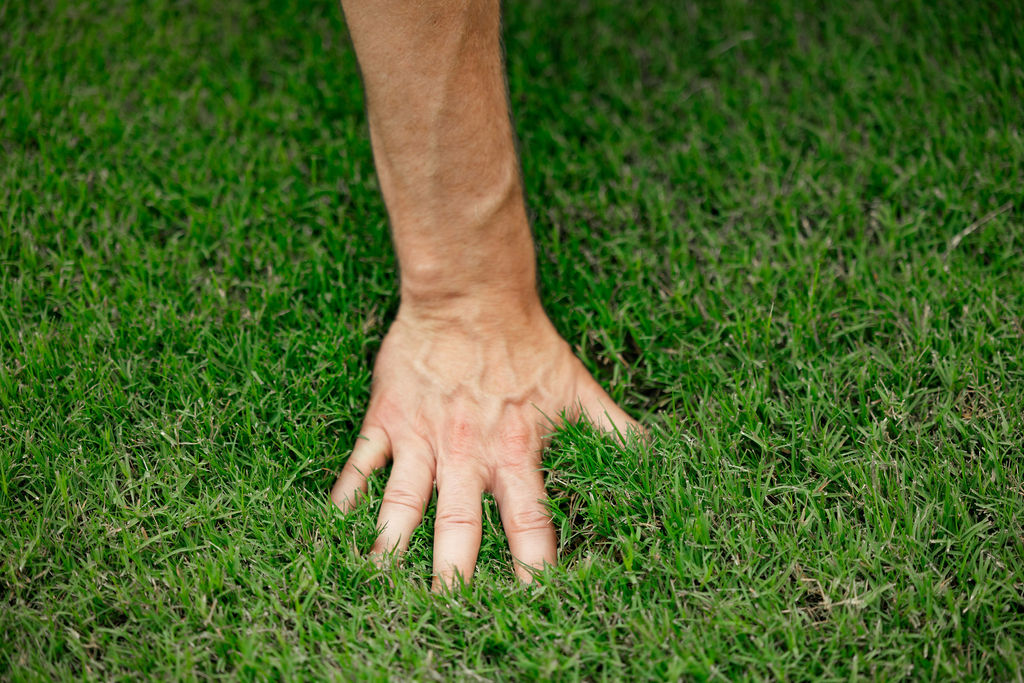Mowing grass can be a very relaxing, nearly meditative activity. It may seem odd to some, but I really love hopping on my mower once the dew is gone on a Saturday, putting on a podcast, and cutting the lawn. When having conversations with homeowners, we often discuss the importance of good mowing habits. While some people don’t enjoy cutting grass as much as we do, we can soften the blow by letting them know that they don’t need to bag their clippings other than for a few strategic reasons.
Do I Need to Bag My Clippings?
Allowing the clipping from your mower to fall to the ground when cutting is not only a good idea. It is encouraged. As clippings begin breaking down, they return nutrients to the soil. In a bit of natural recycling, the plants can then use that nutrition to continue growing. While it may not seem like much nutritional impact could be made by allowing these clippings to fall, we have an indicator that lets us know these amounts are relatively significant.
If you’ve ever had a soil test done by a private lab or Georgia Extension/The University of Georgia, you will be familiar with the graph that shows available amounts in the soil for key nutrients like nitrogen, phosphorus, potassium, magnesium, and calcium. Beneath that, it will give you recommended amounts of fertilizer to apply to correct the deficiencies indicated in the test results. In that portion of the results, it always includes a statement that the amount suggested should be increased by 30% if the area is being bagged when mowed. That’s an unbelievable percentage, and substantiates the practice of allowing clippings to fall.
It’s good for the soil to have organic materials fall as well. In the soil is an entire world of microorganisms whose purpose is to break down material like clippings. As they break organic materials down, the organic matter in the soil increases. This, in turn, increases the soil’s potential to retain and release nutrients, supporting a healthier root mass, and providing a better foundation for the turfgrass.
Do Clippings Contribute to Thatch?
In short: No. Thatch is one of the most misunderstood concepts in turf growth. It can be a scary thing, but is generally misdiagnosed. Tasks like over-fertilization and poor watering techniques do much more to contribute to thatch than allowing your clippings to fall ever could. If you want a deeper dive into thatch, check out this blog. For this conversation, it’s important to understand that thatch is actually a mat of living and semi-degraded stem and root materials.
Roots and stems are much harder than leaves, and that’s because they have more cellulose in their cell walls. Cellulose is what makes wood, wood. Because of their more woody nature, these materials take much longer to break down than softer tissues like leaves which break down relatively quickly. Since they don’t last long, they don’t contribute to thatch.
Is There a Time I Should Bag My Clippings?
It seems odd to conclude a blog about not bagging clippings with a section about when you should bag clippings, but it’s always important to note exceptions to a rule. There are a few good reasons to bag your clippings, and it has everything to do with avoiding accumulation that may be damaging to your turf.
Scalping is something that comes up a little in the spring. While not necessary for a bermuda lawn, it is a fairly common practice. (Side note: do not scalp a zoysia lawn.) When scalping or doing any sort of significant height reset, it is encouraged to bag your clippings. When going deep into the canopy, you are cutting stem materials which can contribute to thatch if left on the ground.
Major height reductions can also cause accumulations of clipping that can smother the turf beneath it. If it’s been too many days since it was last cut, you may consider bagging to avoid leaving large clumps of clipping laying on the lawn. If those clippings stay and get wet, they will cause smothering, etiolation, and invite incidences of disease. Occasionally bagging in scenarios like these is a great way to avoid potential pitfalls.
Lastly, using a mower with a bag attachment is a great way to collect leaves in the fall. If leaves are left to settle on the turf, the threat is much the same as leaving piles of clippings. Smothering and an increased incidence of disease are reasonable expectations. They also take much longer to break down than turf clippings, and fall during a time of year when the degradation process naturally slows due to cooler temperatures.
Important Takeaways:
- Allowing the clipping from your mower to fall to the ground when cutting is not only a good idea. It is encouraged.
- As clippings begin breaking down, they return nutrients to the soil. In a bit of natural recycling, the plants can then use that nutrition to continue growing.
- Leaf tissues cut in weekly mowings don’t contribute to thatch accumulation. Thatch is made up of woody materials like stems and roots, and created by poor fertilization and watering techniques.
- There are a couple of good reasons to bag clippings, and they are to reduce accumulation that may injure your turf. Height resets, cuts after prolonged periods, and leaf clean up in the fall are great examples of when bagging is a good idea.








